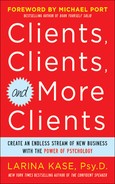Attention Grabber 5: Emotion
,Cognitive psychologists and neuroscientists often study attention that is controlled by the prefrontal cortex—the part of our brains behind our foreheads that is the most evolved part of the brain, responsible for attention, planning, and solving problems. There may also be a deeper part of our brain, emotional parts (such as the limbic components in cingulate cortex and amygdala), involved. We attend to and remember emotion. In one study, three patients who had strokes (in the right parietal part of their brain) showed a greater ability to remember faces with strong emotional expressions, including happy or angry, than faces with neutral expressions.
There are two ways to use emotion:
• Convey your own emotion.
• Stimulate an emotional reaction in someone else.
How can you convey your own emotion? One way is in your head-shot. If you’re trying to decide between a headshot with a professional, neutral look and one with a happy expression, go for the happy one if you want to be remembered. People judge expressions of happiness in part by how much our eyes squint or crinkle at the corners. Crow’s feet can make you look happier, so go easy on the Botox and model-type smiles where your eyes are wide open and you have a painted on smile.
Another way is in your expressiveness. Allow your nonverbal communication to convey how you feel—whether it is serious, passionate, relaxed, or cheerful—with your tone of voice (the feeling in your voice), pitch (how high or low it is), speed (how fast or slow), and volume (how soft or loud), and your body language (how you move, your gestures, posture, and facial expression). Know that if your verbal communication (what you say) and nonverbal communication (how you say it) do not match, people trust your nonverbal communication. Performers sometimes use contrast in verbal and nonverbal communication to keep their audiences focused and engaged, such as telling a hilarious joke with a poker face. I don’t recommend this unless you’re a stand-up comic, but you can see how effectively emotion (or the absence of emotion) can be used to focus attention.
We often try so hard to be “professional” that we neglect to show our emotions and attract attention. If you’re so emotionally controlled that you come across as professional but no one pays attention or is attracted to you and what you have to offer, you have not accomplished anything. Let your personality show; you’ll feel more authentic and establish better bonds with people.
How can you stimulate an emotional reaction in someone else? You’ll get a lot of ideas for this in the next chapter.
Now that I have your attention, let’s move on to one of the most important things you can do in your marketing: engage emotion.
